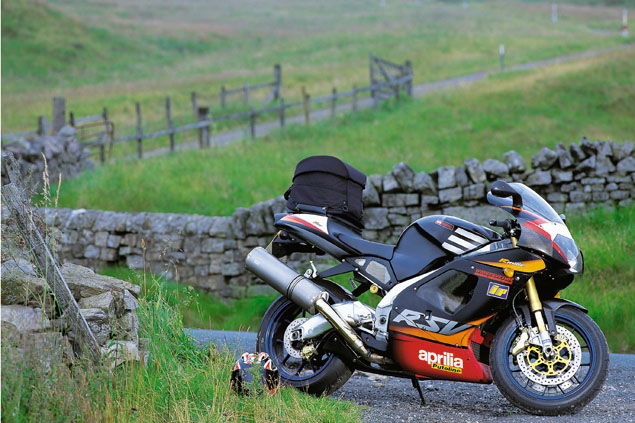Special K: Project ZX-7R
The Kawasaki ZX-7R is overweight, lardy and obsolete. Just like Bert in fact. But take both of these old buggers, strip them bare (well, maybe just the bike), put them on the track and what do you get? Carnage, probably. Behold Bertie's project ZX-7R


In this pothole covered, copper-infested, diesel-strewn, Gatso-riddled sceptic tank we call the United Kingdom, enjoyment on two wheels is increasingly frowned upon.
Trackdays are the antidote to this malady, but it's disconcerting to see nine grand's worth of superbike scraping its wallet-wrenching way into the gravel after just two laps of the first session of the day. Thankfully, there is a solution. Buy an old banger and whack it on the track with minimum of outlay. The golden rules being to keep it simple and keep it cheap. But which machine? What you want is something that's been around for ages, is proven and yet has hardly changed in that time. This would mean plentiful availability of spares for when you bin it, as well as good base settings and all-round know-how for tuning engine and suspension.
Personally I've always had a soft spot for Kawasakis and especially the ZX-7R. Since the late 1980s, I've watched spellbound as a succession of madmen have raced the inline-four ZXR and later the ZX-7R with varying degrees of success against the dominant twins in domestic and World Superbike. David versus Goliath. I liked that. And while I'm more of a Goliath than a David in size, the thought of a ZX-7R trackie worked for me on a number of levels.
Firstly, they've been around and unchanged since the launch in late '95, which means oodles of cheap machines and parts around. Secondly, since then they've been raced very competitively in the hands of privateers, which means they have the potential to be great track machines while assorted racers will have some cheap odds and sods knocking about. Thirdly, while 'neon bogey crush' has never been the new black for any debonair autumnal collection, there are few more stirring sights and sounds in racing than an angry green-meanie screaming its tits off on full-chat through Craner Curves...
Over the years the ZX-7R has sold steadily and built up a cult following thanks to virtues including its planted front-end, reliable and tunable engine and quality standard suspension. The downside is that at 203 kilos, it - like my chunky self - is a porky sod. This pork we should be able to slice off by ditching lights, mirrors, clunky stock bodywork, pipe, etc, and replacing them with wafer-thin race clothes and a freer-breathing system.
A trawl through the classifieds revealed a good few possibilities, but many were either immaculate examples (Kawasaki owners are a proud bunch) or too new and too expensive. But, after a few weeks of searching I found the perfect match. It was a P-reg 7R, in green which had been crashed then bought cheap with the purpose of being put back on the road. Alas, it had been left to fester as the bloke struggled with a problematic personal life (read 'woman') and the big Kwak became the sad victim of an 'it or me' moment. I commiserated with the poor sod, before parting with £1,200 for the bike and bits. Considering an average condition runner would have set me back £2,200 privately, I was happy.

